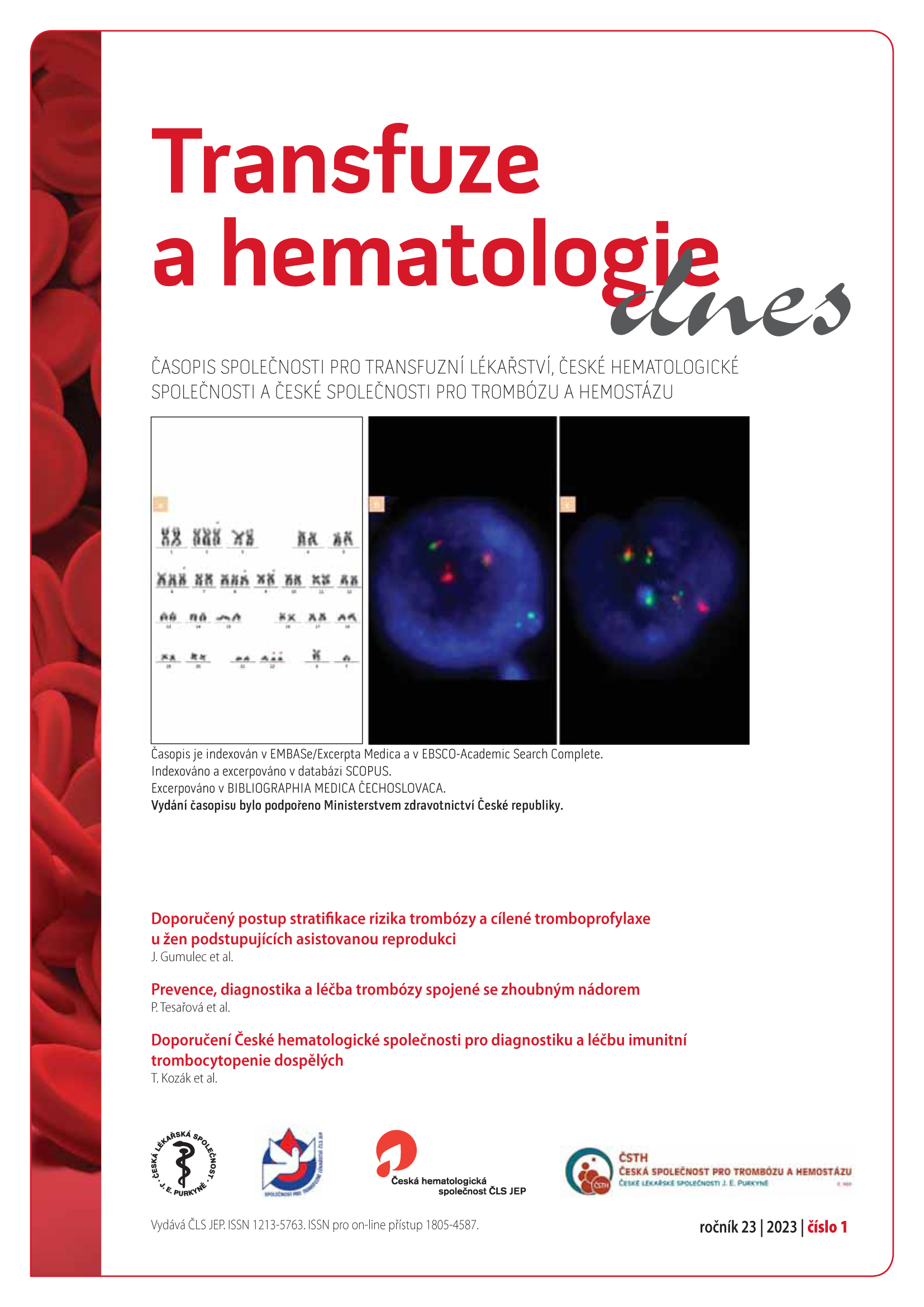Vascular adverse events in chronic myeloid leukemia patients during tyrosine kinase inhibitors therapy in daily clinical practice – analysis from the INFINITY database.
Cévní NÚ u pacientů s CML
Keywords:
chronic myeloid leukemia, tyrosine kinase inhibitors, vascular adverse events, ponatinib, nilotinib, INFINITYAbstract
The introduction of the first tyrosine kinase inhibitor imatinib into clinical practice has been associated with dramatical change of chronic myeloid leukemia treatment in the last 20 years. It represents one of the biggest achievements of hematology and oncology per se. Imatinib was followed by the second- and third generation tyrosine kinase inhibitors (nilotinib, dasatinib, bosutinib and ponatinib) resulting in almost the same life expectancy of newly diagnosed chronic myeloid leukemia patients as of the general population. Nevertheless, this often-lifelong treatment can be associated with side effects, which in extraordinary cases could be life threatening. Vascular adverse events are also included in serious adverse events and their incidence vary in wide range of 0.32-47.8%, most frequently during the nilotinib or ponatinib treatment. Their incidence in daily clinical practice in the Czech Republic was evaluated in a retrospective analysis of the INFINITY database. From January 2005 to August 2020, chronic myeloid leukemia was diagnosed in 1029 patients, and 1007 of them had valid records for analysis, 947 patients was in chronic phase. At least one vascular adverse event occurred in 82 patients (8.5%) in chronic phase during tyrosine kinase inhibitors therapy, most frequently in patients receiving nilotinib (10.8%) and ponatinib (8.3%). During the first-line tyrosine kinase inhibitors treatment, 60 patients (6.3%) experienced at least one vascular adverse event. In direct comparison of the first line imatinib and nilotinib therapy, we found significantly higher incidence of cardiovascular (2.6 % vs. 7.2%, p = 0.013), cerebrovascular (1.4% vs. 4.8%, p = 0.019), and peripheral vascular adverse events (0.2% vs. 4.0%, p = 0.001) in nilotinib treated patients, respectively. This paper offers a more detailed picture of the vascular adverse events incidence in patients with chronic myeloid leukemia treated by tyrosine kinase inhibitors in clinical practice in the Czech Republic and its comparison with available literature data.


